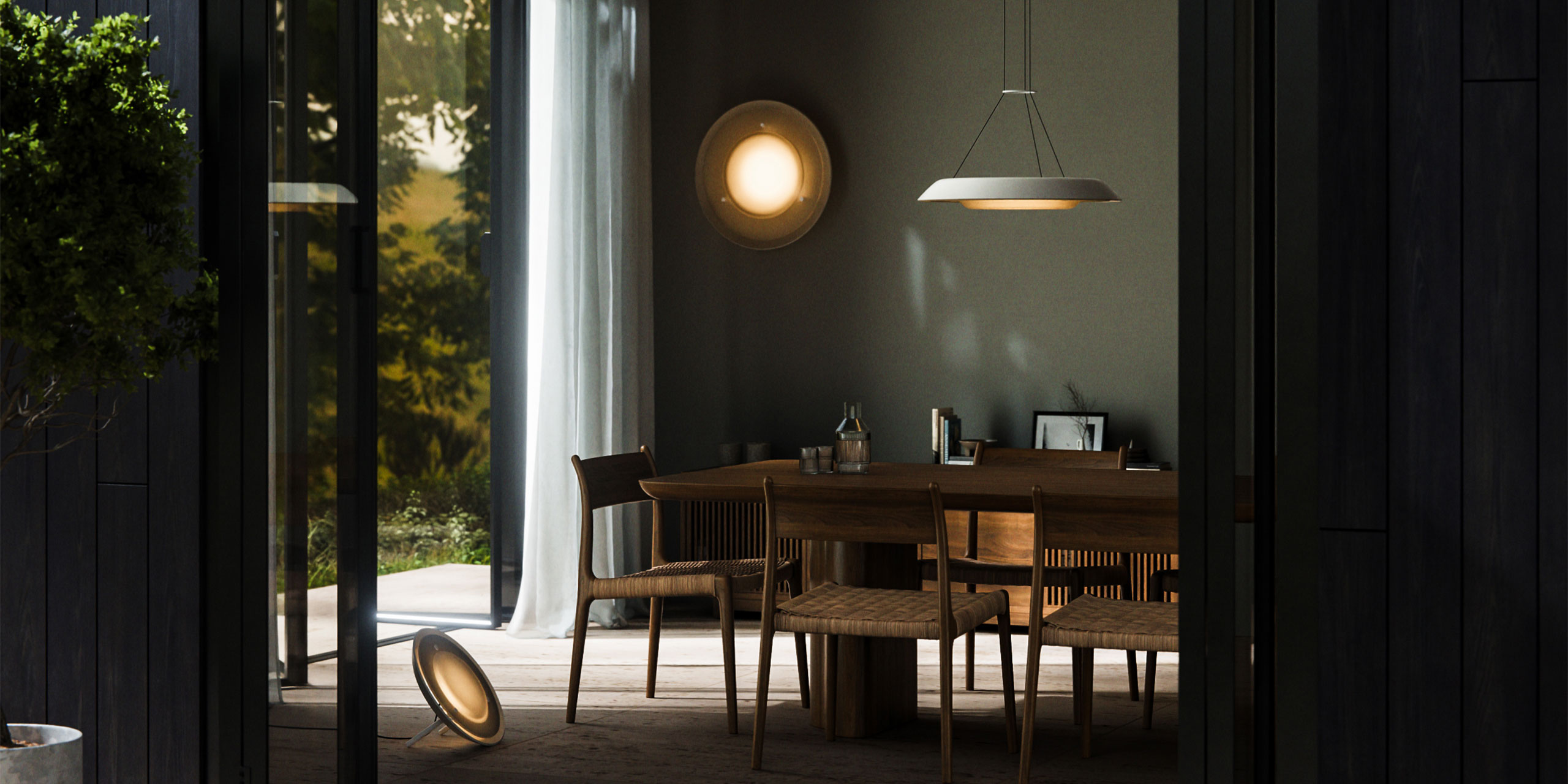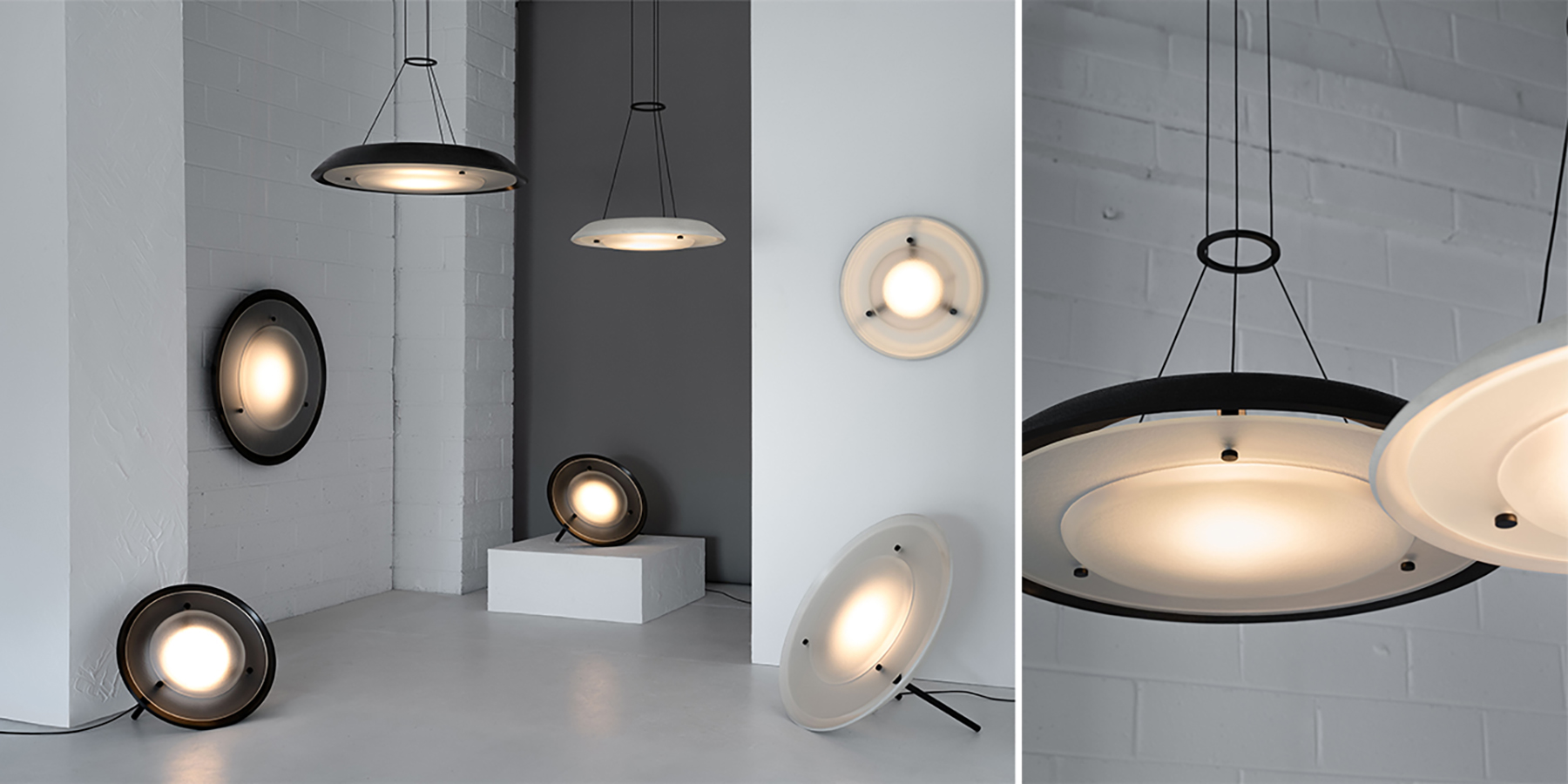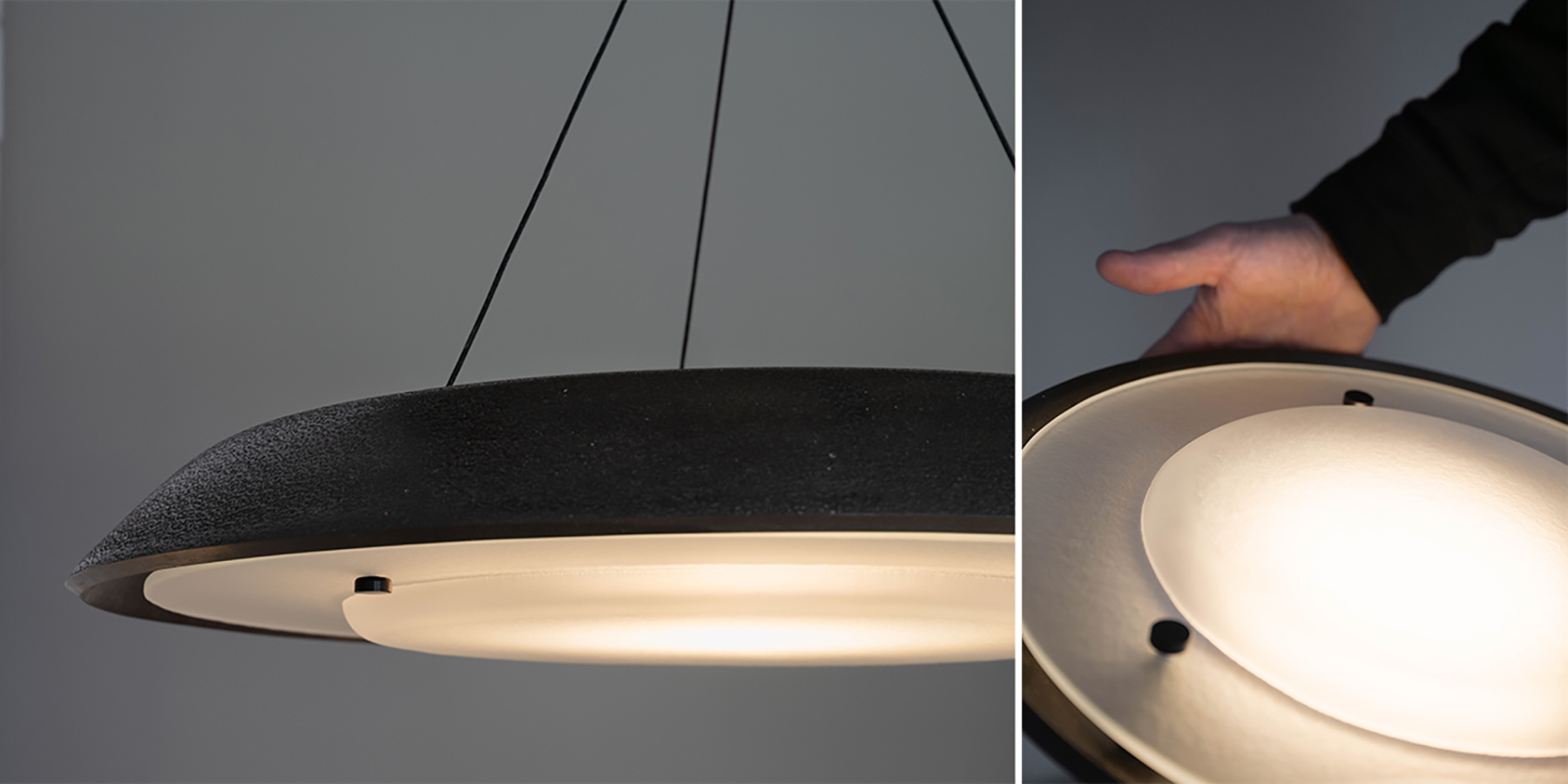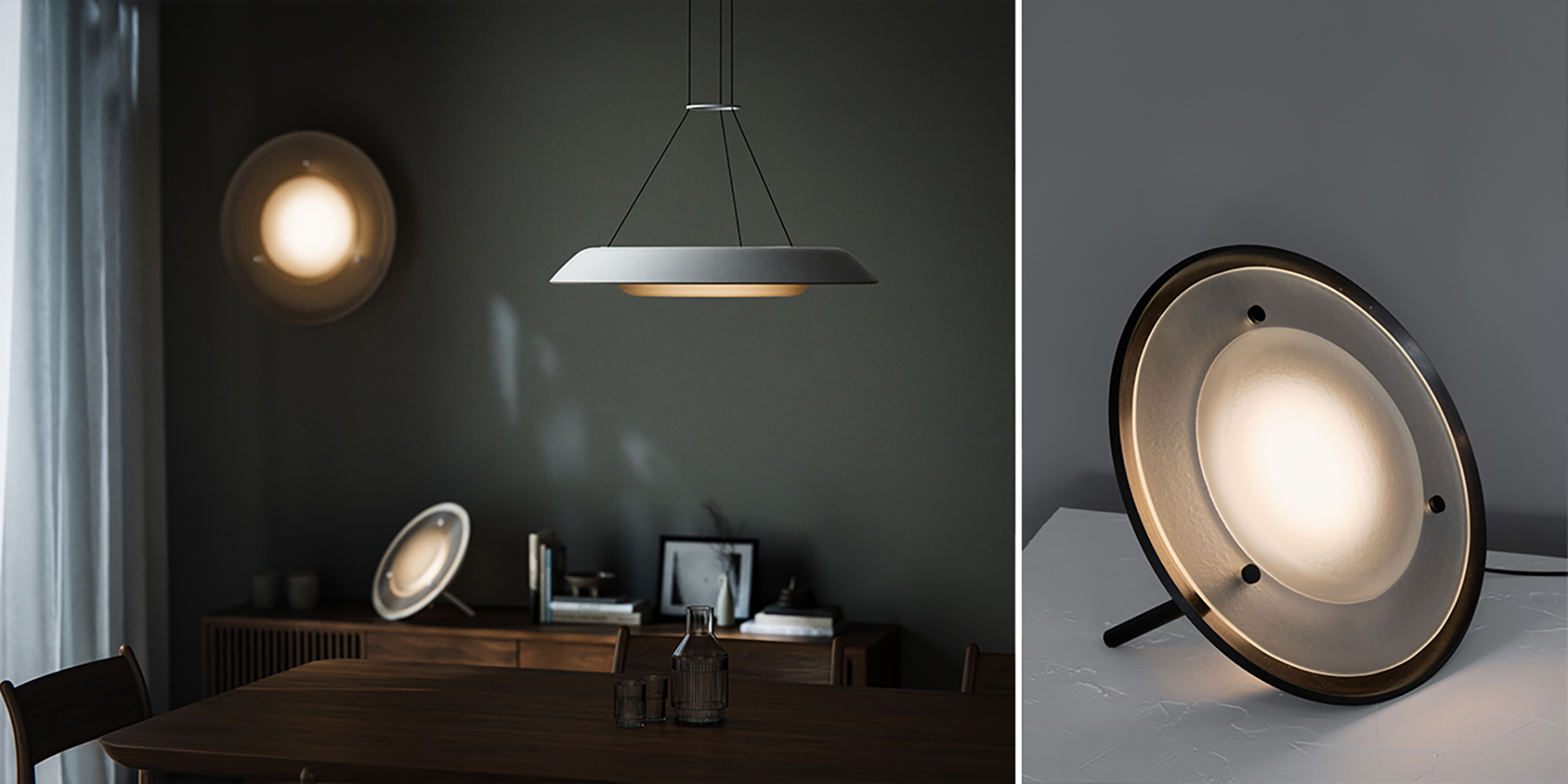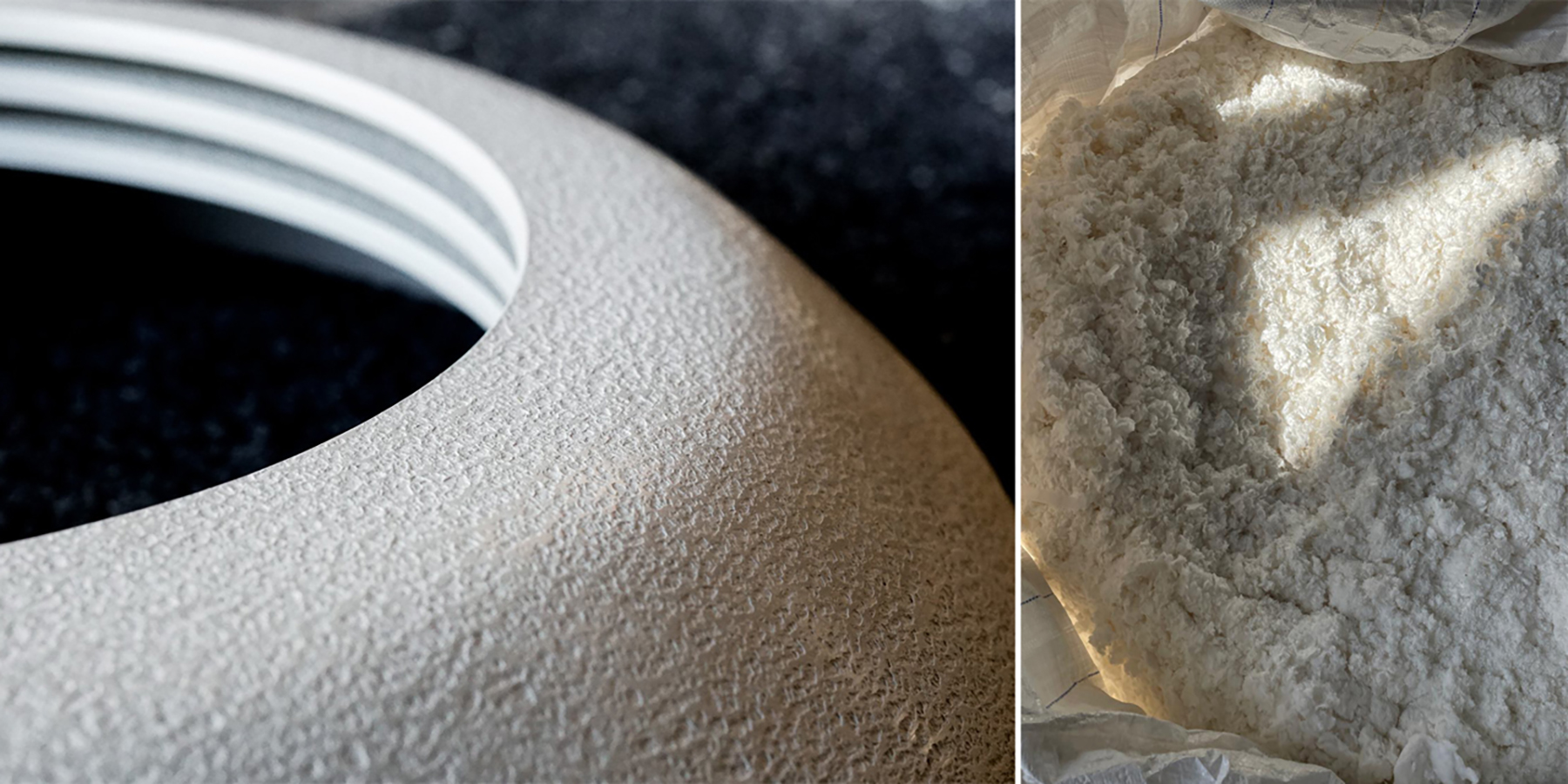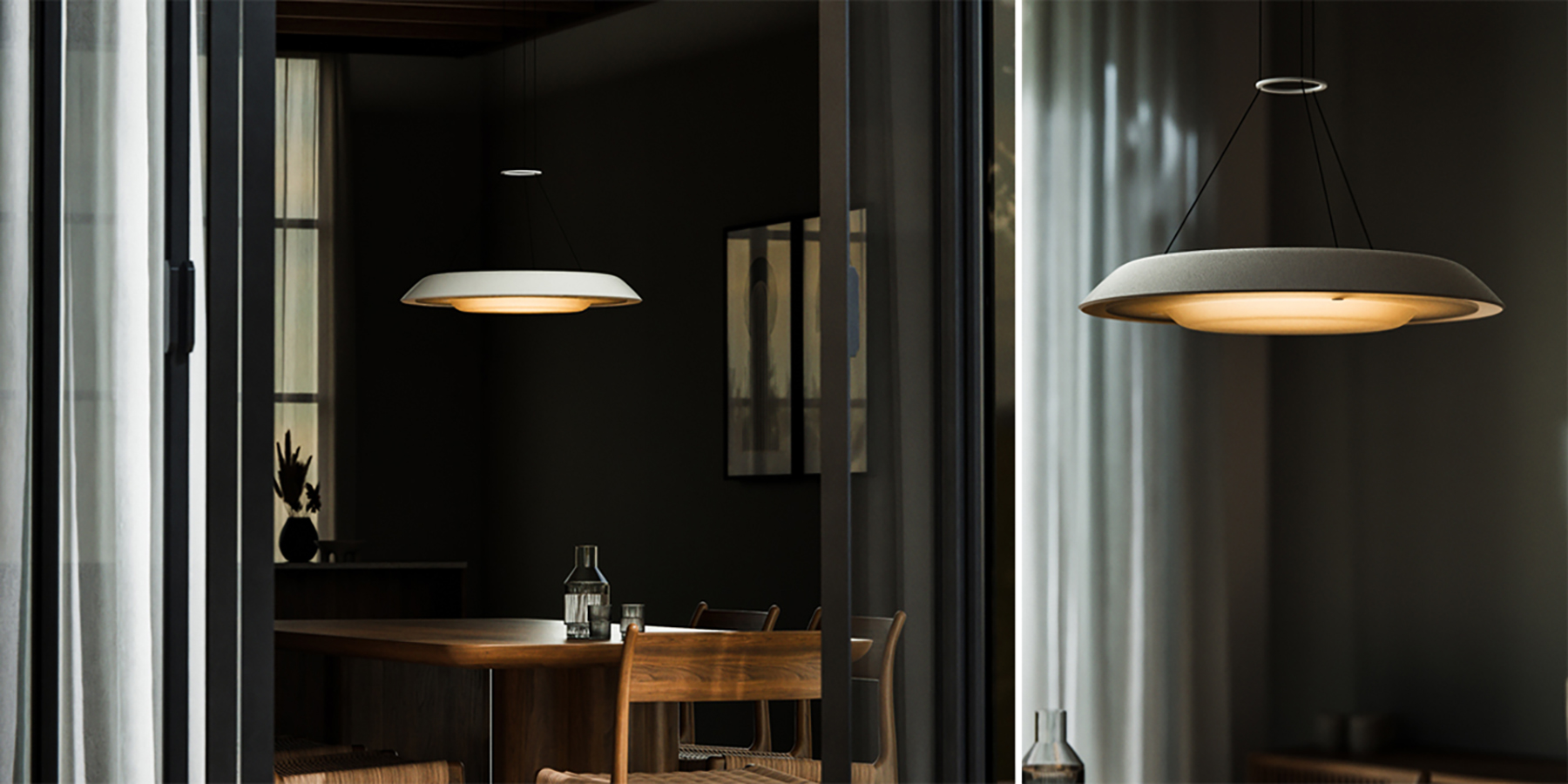The discovery of Zeoform Micro Pulp (ZMP)—an Australian-developed, paper-based fibre made from industrial waste—prompted the design team to rethink conventional approaches to lighting design.
Early prototyping focused on understanding ZMP’s forming constraints and machining possibilities. Its clay-like behaviour when wet and timber-like machinability when cured informed every detail—from wall thicknesses and joint designs to surface textures and fixing systems.
In parallel, the team developed a modular internal structure where a single shade and slumped glass diffuser could translate across three formats: pendant, wall sconce and floor light, each in two sizes. This reduced material waste and allowed for streamlined servicing and part replacement.
Recognising the demands of circular design, every element was created to be disassembled and maintained—without sacrificing visual or tactile quality. Precision-machined aluminium components and long-life LED modules were selected for both durability and recyclability.
The design process also spurred internal growth. The studio invested in new in-house machinery and production processes for manufacturing key secondary components—enabling tighter control over tolerances, finish, and material efficiency.
Final assembly of every Husk light takes place in-house, ensuring that each piece meets the studio’s standards for quality and resolution.
The result is a collection where every junction, surface and material transition has been considered and refined—not only for how it looks and feels, but for how it performs and endures.

